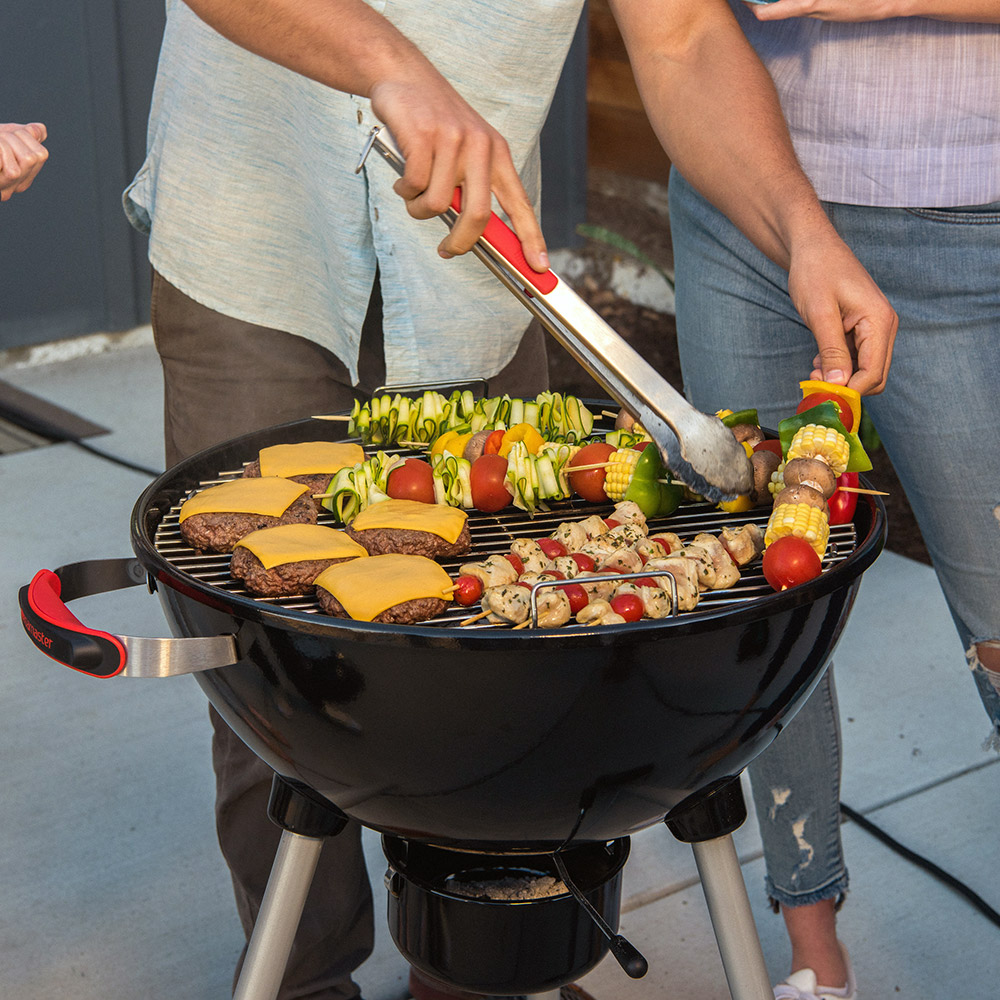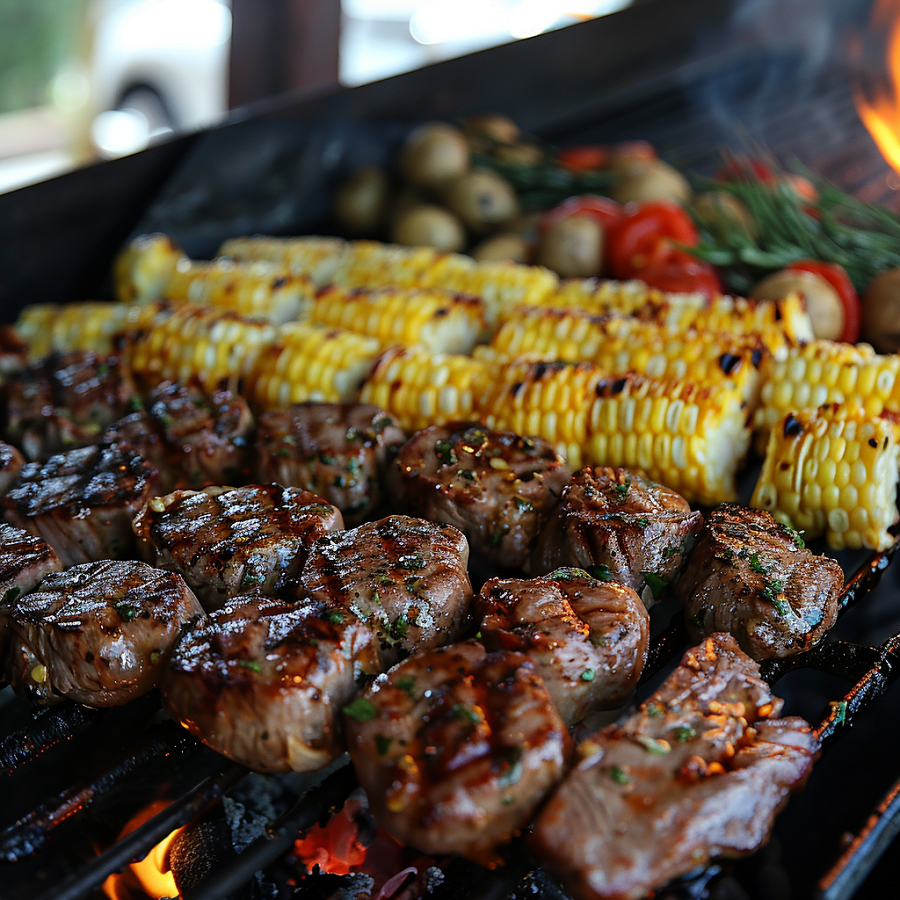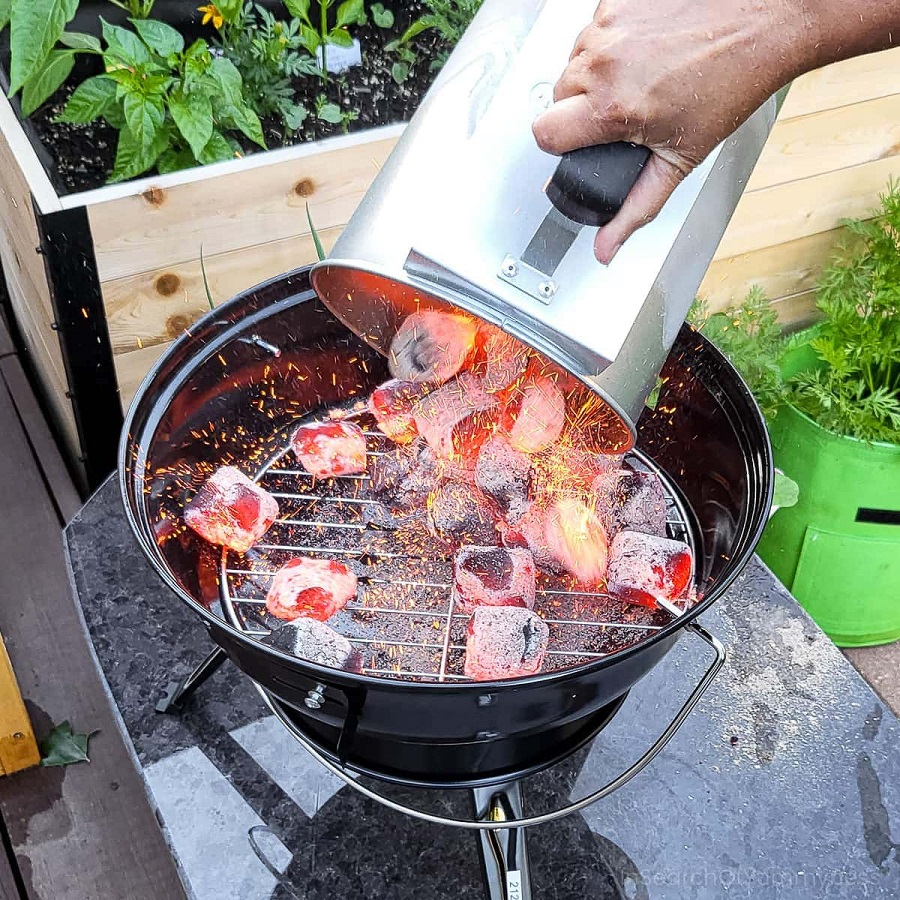Introduction to Grill and BBQ
Definitions and Basic Differences
Grill vs BBQ – Grilling and barbecuing, often confused, hold distinct qualities and styles of cooking. Grilling involves direct, high heat, ideally for quick cooking. This method allows food, such as thin cuts of meat or vegetables, to cook rapidly on a grate directly above an open flame. Meanwhile, BBQ, embracing the ‘low and slow’ philosophy, uses indirect heat and longer cooking times. This approach is perfect for tougher, larger cuts of meat that benefit from prolonged exposure to heat, delivering tender and flavorful results. Thus, while both methods use heat to cook, the intensity, duration, and equipment differ substantially between grilling and BBQ.
Historical Background of Grill and BBQ
Understanding the historical roots enhances appreciation for the methods. The narrative entails a fascinating transition from primitive cooking to the advanced grilling and BBQ techniques of today.
Origins and Evolution Over Time
Grilling’s history dates back to when humanity first harnessed fire, enabling the cooking of food directly over flames. This ancient method developed into grilling as we recognize it after World War II, influenced by the suburban growth and outdoor family gatherings that became popular.
In contrast, BBQ has its origin story intertwined with the term ‘barbacoa’ from the early Spanish explorers observing the New World’s natives. The indigenous people grilled over an open fire, and the Spanish adopted this method, laying the groundwork for what would evolve into modern BBQ. Reference Blog1 speaks about Gonzalo Fernandez de Oviedo, a historian who first documented this method.
Over time, BBQ took on its identity, distinguishing itself by cooking style and the characteristics of meats ideal for this process, suited for slow and low temperature cooking to tenderize tougher cuts. Grilling remained the quick, high-heat method ideal for thinner cuts that cook rapidly.
Both grilling and BBQ continued to evolve, with suburban America popularizing the backyard grill and the widespread regional BBQ styles highlighting unique flavors and traditions. The evolution of grill vs bbq is not simply a tale of two cooking techniques but the history of culinary ingenuity adapting to changing lifestyles and preferences.
Key Differences Between Grilling and BBQ
Grilling and BBQ each have unique features that set them apart. Here we detail their distinctions in equipment, temperature, and meat cuts.
Cooking Equipment and Setup
Grilling often requires a basic grill—gas, charcoal, or electric—with a grate set directly over the heat source. This setup lets you cook with the lid open or closed. BBQ, on the other hand, usually involves smokers or specific BBQ pits. These are designed for indirect heat flow and consistent temperatures, vital for the low and slow cooking method inherent in BBQ.
Heat Source and Temperature
In grilling, the heat source—open flame or hot coals—provides direct, intense heat upwards of 500°F (260°C), which cooks food quickly. For BBQ, the heat comes indirectly, often from charcoal or wood. The temperature in BBQ is much lower, around 225°F (107°C) to 275°F (135°C), allowing a slower cook and deeper flavor infusion.
Meat Cuts Suitable for Each Technique
Grilling is ideal for thin, tender cuts of meat that can cook quickly, such as steaks, burgers, chicken breasts, and seafood. BBQ, with its extended cook times, is better suited for larger, tougher cuts like ribs, brisket, and pork shoulders. These meats benefit from the prolonged cooking period which breaks down tough fibers, resulting in tender, juicy dishes.
Practical Guide to Grilling
Grilling stands out for its quick, high-heat cooking. Perfect for social gatherings, grilling turns fresh ingredients into mouthwatering meals with a few simple steps. For stunning results, follow these grilling best practices and find out which meats work best with this technique.
Best Practices for Grilling
To grill like a pro, preheat your grill to the right temperature before starting. Clean the grate with a brush to prevent sticking. Oil your meat, not the grill, to enhance flavor and avoid flare-ups. Monitor your grilling closely, flipping meats just once for even cooking. Lastly, let your grilled meats rest after cooking – this locks in juices for a more succulent bite.
Recommended Meats for Grilling
When it comes to grilling, choose cuts that thrive under direct heat. Steaks, burgers, chicken breasts, and kebabs are all ideal for grilling. Thinly sliced vegetables and seafood, like shrimp and fish fillets, also excel on the grill. Each brings a unique texture and taste, perfect for a quick sear over flaming hot grates.
 In-depth Look at BBQ
In-depth Look at BBQ
Barbecue (BBQ) presents a culinary technique distinct from grilling, revered for its ability to transform tougher meat cuts into tender delicacies. Its hallmark is the ‘low and slow’ approach, requiring patience and the right setup to achieve the desired results.
Low and Slow Cooking Method
BBQ’s ‘low and slow’ cooking method is essential for breaking down the tougher, collagen-rich cuts of meat. This process typically involves maintaining low cooking temperatures, generally around 225 to 275 degrees Fahrenheit, over an extended period. The extended cooking time, which can range from a few hours to an entire day, allows the meat’s connective tissues to gradually break down without overcooking the exterior, resulting in a tender, flavorsome outcome.
Ideal Meat Choices for BBQ
The types of meat best suited for BBQ are those that benefit from lengthy cooking times. These include brisket, ribs, pork shoulders, and other cuts with a substantial amount of connective tissue. The low and slow process allows the meat’s fats to render and connective tissues to become tender, leading to a juicy and succulent dish that’s worth the wait.
The Role of Marinades and Smoke
Marinades play a vital part in BBQ, both as tenderizers and flavor enhancers. The slow cooking process allows the marinade’s flavors to deeply penetrate the meat. Smoke, emanating from carefully selected woods, infuses the meat with a distinct, smoky taste—a signature element of authentic BBQ. The combination of smoke and marinades can turn a simple cut of meat into a gourmet experience, showcasing the power of time-honored BBQ traditions.
Comparing Marinades and Sauces
Usage in BBQ vs Grilling
The choice of marinades and sauces dramatically influences the taste of both barbecue (BBQ) and grilled dishes. However, their application varies significantly between these two cooking techniques due to the inherent differences in heat source and cooking duration.
BBQ: In BBQ, marinades are crucial. They enhance flavor, tenderize tougher meats, and help in moisture retention over long cooking periods. BBQ often employs both dry rubs and wet marinades. The slow cooking allows flavors to deeply permeate the meat, improving the overall taste without risking the burning of spices. BBQ sauces are usually added at the end of the cooking process because of their sugar content, which could burn if introduced too early. Smoke also plays a key role, adding a distinctive smoky flavor that is a signature of traditional BBQ.
Grilling: Grilling, being a quicker process involving direct heat, typically uses simpler and lighter marinades which don’t overshadow the natural flavors of the food. Since foods are only briefly exposed to heat, the marinades need not be heavily focused on tenderization. Dry seasoning is more common than in BBQ, but care must be taken to avoid charring since the high heat can quickly burn spices. Unlike BBQ, sauces can sometimes be used during the final minutes of grilling to add a glaze but should be monitored carefully to prevent burning.
Understanding these differences can help in preparing better flavored, perfectly cooked meals whether you’re BBQing or grilling.
The Role of Wood and Smoke in BBQ
When barbecuing, the type of wood used is as critical as the cooking time.
Choosing the Right Wood for Flavor
Choosing the right wood transforms a simple BBQ into a culinary masterpiece. Different woods impart distinct flavors, and the choice can enhance or clash with your meat’s natural taste.
Hardwoods like hickory, oak, and mesquite are BBQ favorites. They offer strong, smoky flavors that pair well with beef and pork. For those preferring subtler tastes, fruitwoods like apple, cherry, and peach provide a milder, sweeter smoke, making them excellent for chicken and fish.
For a balanced flavor, combine different woods. Use a stronger wood as the base and a fruitwood for nuance. Experiment with wood blends for unique flavor profiles.
Keep these points in mind while using wood for BBQ:
- Soak wood chips before use to create more smoke and prevent burning.
- Use chunks over chips for longer cooking times, as they smolder longer.
- Avoid resinous woods like pine; they give off unpleasant flavors and can be toxic.
- Never use treated or painted wood as it can release harmful chemicals when burned.
Proper use of wood and smoke can elevate your BBQ, creating unforgettable dishes that boast a wonderful harmony of flavors. Whether you prefer robust or delicate smoky notes, the right wood makes all the difference. Remember, the aim is to complement the meat, not overpower it.


